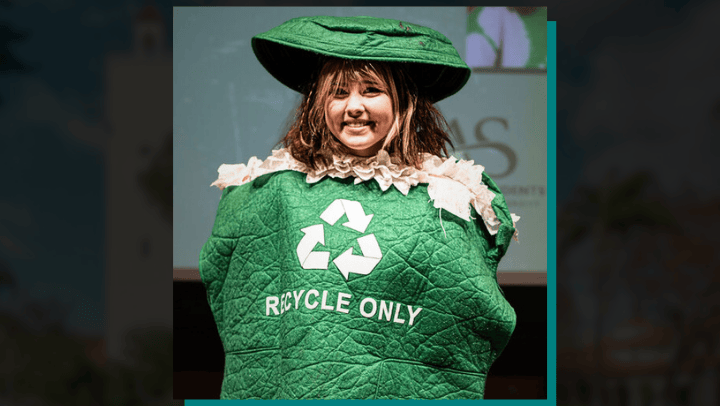Underwater graveyard exposes toxic DDT threat near Catalina Island in the new documentary ‘Out of Plain Sight’
SDSU professor Eunha Hoh is featured in the film’s premiere at the San Diego Asian Film Festival

Not far from San Diego, under the pristine waters off the coast of Catalina Island, lurks a dirty secret. A toxic graveyard of half a million barrels, filled with decades-old manufacturing waste products, is rusting into the sea.
It sounds like the start of a sci-fi horror movie, but the shocking reality is exposed in a powerful documentary, “Out of Plain Sight,” which opens the San Diego Asian Film Festival on Friday, April 25.
San Diego State University’s School of Public Health professor Eunha Hoh is featured in the film for her groundbreaking research on alarming levels of the insecticide DDT—short for dichloro-diphenyl-trichloroethane—in Southern California's marine animals and ecosystems.
“These chemicals have entered and biomagnified through the marine food web,” said Hoh. “We are seeing impacts not only in marine mammals but also in endangered species like the California condor, which feeds on marine mammal carcasses along the coast. DDT poses a health risk to humans through seafood consumption.”
 Open the image full screen.
Open the image full screen.
Dumping chemical waste was legal until the 1970s, with several sites along Southern California's coast. Although DDT and its ocean dumping were banned over 50 years ago, the chemical persists today.
“DDT can persist in the environment for many decades, potentially hundreds of years,” said Hoh. “More importantly, the degradation of DDT is significantly slower in deep ocean environments due to the lack of oxygen and sunlight,” she said.
Hoh’s team detected some of the highest levels of DDT ever recorded in marine mammals throughout the Southern California Bight in 2015. Hoh said they also discovered “a range of previously unidentified DDT-related compounds—up to 45 distinct substances, including potentially harmful degradation products and byproducts.”
The Southern California Bight is a 430-mile stretch of curved coastline that runs along the West Coast of the United States and Mexico, from Point Conception in California to Punta Colonet in Baja California. It extends into other Pacific Ocean areas, including the Channel Islands of California, the Coronado Islands, and the Islas de Todos Santos of Baja California.
A few years following Hoh’s discovery, David Valentine, a UC Santa Barbara professor, reported finding the same toxic compounds in sea basin sediments. In 2022, Valentine and Hoh began collaborating on the research project, which continues today.
“Our findings strongly suggest an ongoing source of DDT contamination linked to offshore dumping,” said Hoh.
This chilling discovery and the magnitude of a looming environmental catastrophe set off a cascade of scientific and journalistic inquiries. The Los Angeles Times published an investigative report, followed by the LA Times Studio’s documentary, “Out of Plain Sight,” which visually exposes the severity of the environmental hazard submerged for decades. Rosanna Xia, an environmental reporter for the Times, was a producer and director of the film.
Out of Plain Sight reveals details of an ongoing investigation of DDT’s impact just miles off Southern California’s coast. It can be seen at the San Diego Asian Film Festival on opening night, April 25, at 7 p.m. at UltraStar Cinemas Mission Valley.
Released in November 2024, the documentary won the Audience Choice Award at the Santa Barbara International Film Festival and the Shared Earth Foundation Award for Advocacy at the 2025 Environmental Film Festival in Washington, D.C.
San Diego State University’s School of Public Health and the SDSU APIDA Center are partners in the SDAFF.




